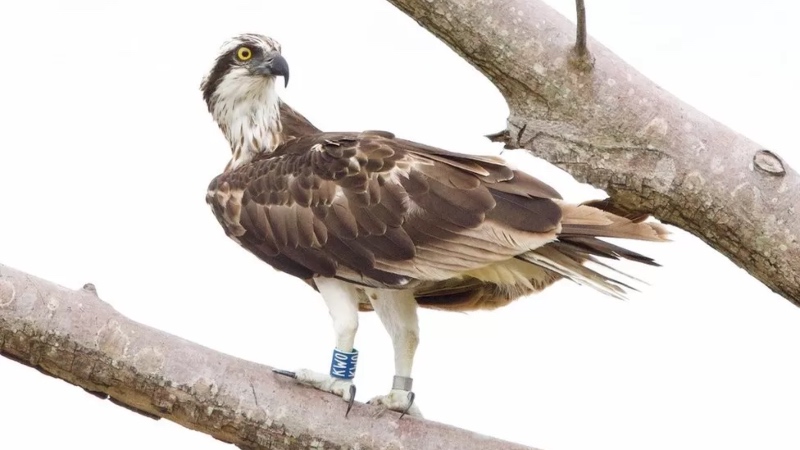A female osprey has completed a “remarkable” transatlantic journey from Scotland to Barbados.
The bird of prey, which was tagged last summer in Clyde Muirshiel Regional Park in Renfrewshire, was spotted on the Caribbean island earlier this month.
The Roy Dennis Wildlife Foundation said it covered 4,124 miles during its epic journey from Lochwinnoch.
And one expert said it was the first time a UK osprey had been observed in the Americas.
Nature conservationist and writer Tim Mackrill said ospreys had been colour-ringed in the UK since the late 1960s.
This has provided a wealth of valuable data on everything from longevity to migratory movements.
Writing on the foundation website, Mr Mackrill said: “We have received some very interesting re-sightings over the years, from a bird that returns to winter on the Canary Islands each year, to others which have migrated as far south as the Ivory Coast and Ghana.
“However, earlier this month we received what is undoubtedly the most remarkable record of all.”
Mr Mackrill said the foundation was contacted by conservationist Michael St John, who photographed a female with a blue ring on its left leg.
He added: “Nothing unusual there until I noticed where he had seen it – Bawdens Irrigation Pond in the north of Barbados in the Caribbean.
“The ring number was clearly visible – KW0, which indicated it was a bird from Scotland.”
The osprey was first observed six miles away at Fosters private wetland on 25 October but on that occasion Mr St John had not been able to read the ring.
KW0 was one of two chicks ringed on 23 June last year at a nest in Clyde Muirshiel Regional Park by the Clyde Ringing Group.
The osprey was photographed in Barbados by conservationist Michael St John. (Source:BBC/Michael St John)
It is estimated they left Scotland on migration in late August or early September.
Mr Mackrill said some Finnish Ospreys were known to migrate to South Africa for winter, which is a greater distance.
See also
But he added that most of the Scottish osprey’s journey was across the Atlantic.
Its route is thought to have been from south-west Ireland to Barbados, which is about 3,800 miles.
Mr Mackrill said: “It is highly unlikely that even an osprey could have completed this in a single flight, even with strong tailwinds, and so it is probable that she took the opportunity to rest on boats, which may themselves have been travelling to the Caribbean from the UK.
“It could be that KW0 stopped-off on the Azores en route to Barbados.
“One thing we can be certain of is that KW0 must have departed on migration in exceptional condition in order to have survived this remarkable transatlantic crossing.”
Mr Mackrill said the bird appeared “very settled” and may well remain on the island for the foreseeable future.
Duncan Orr-Ewing, RSPB Scotland’s head of species and land management, said: “Ospreys never cease to amaze us with their incredible exploits but this latest sighting of a ringed Scottish osprey in Barbados is certainly one of the best yet.
“The RSPB is pleased to have played a pioneering role in Scotland, encouraging the osprey’s return as a breeding bird from the 1950s at Loch Garten in the Highlands, and we can now see this species gradually re-occupying all of its former range across the UK.”





















Discussion about this post